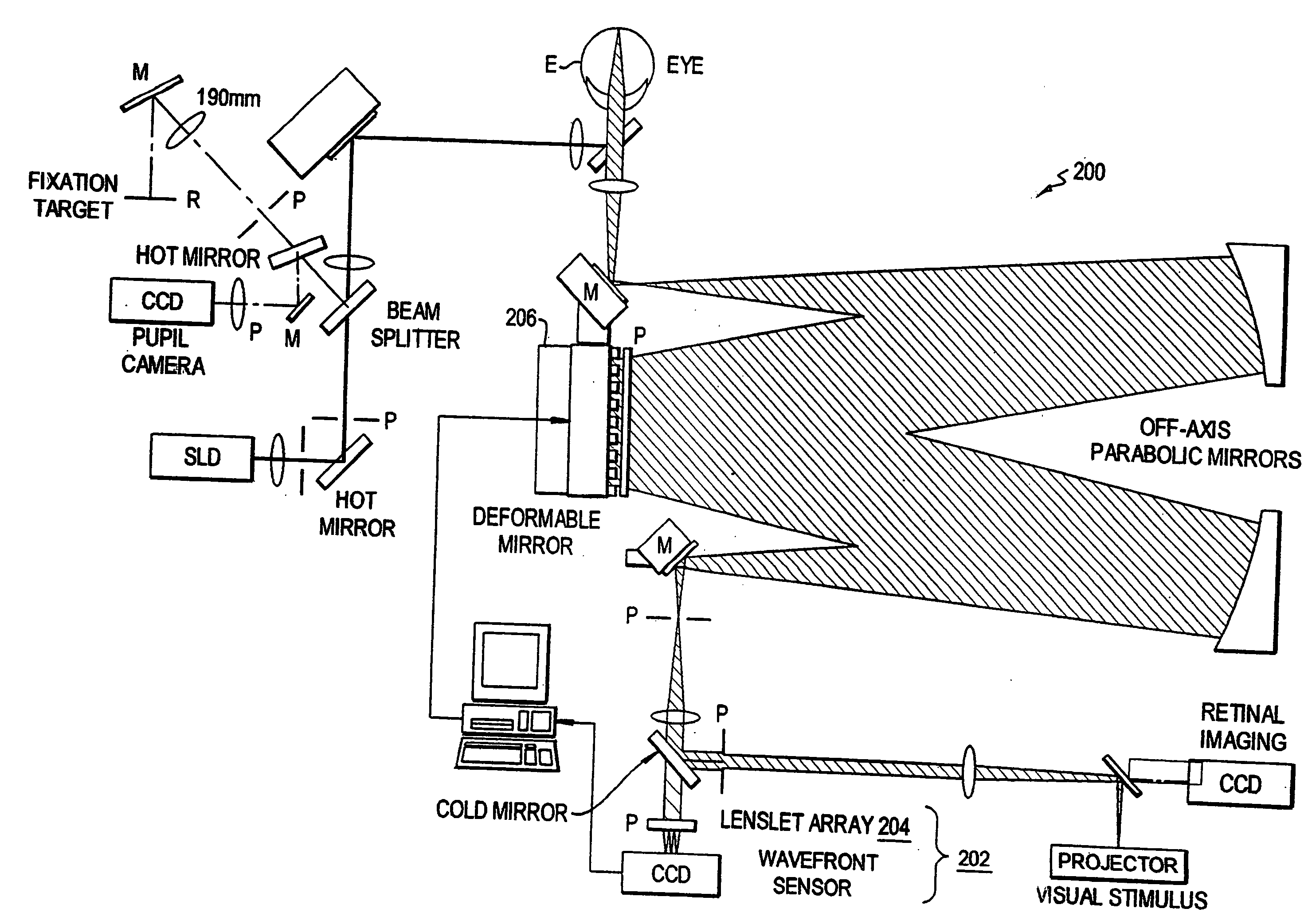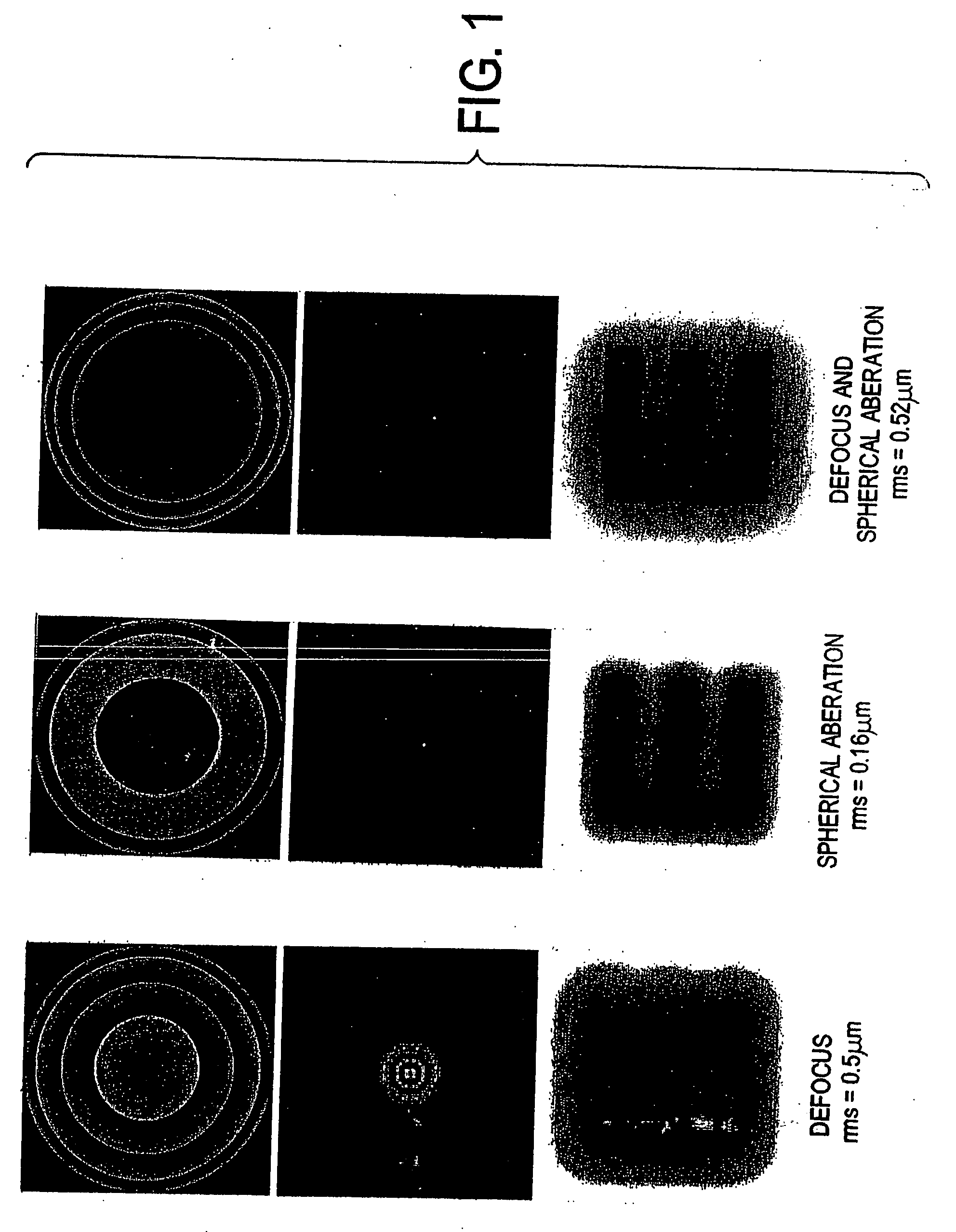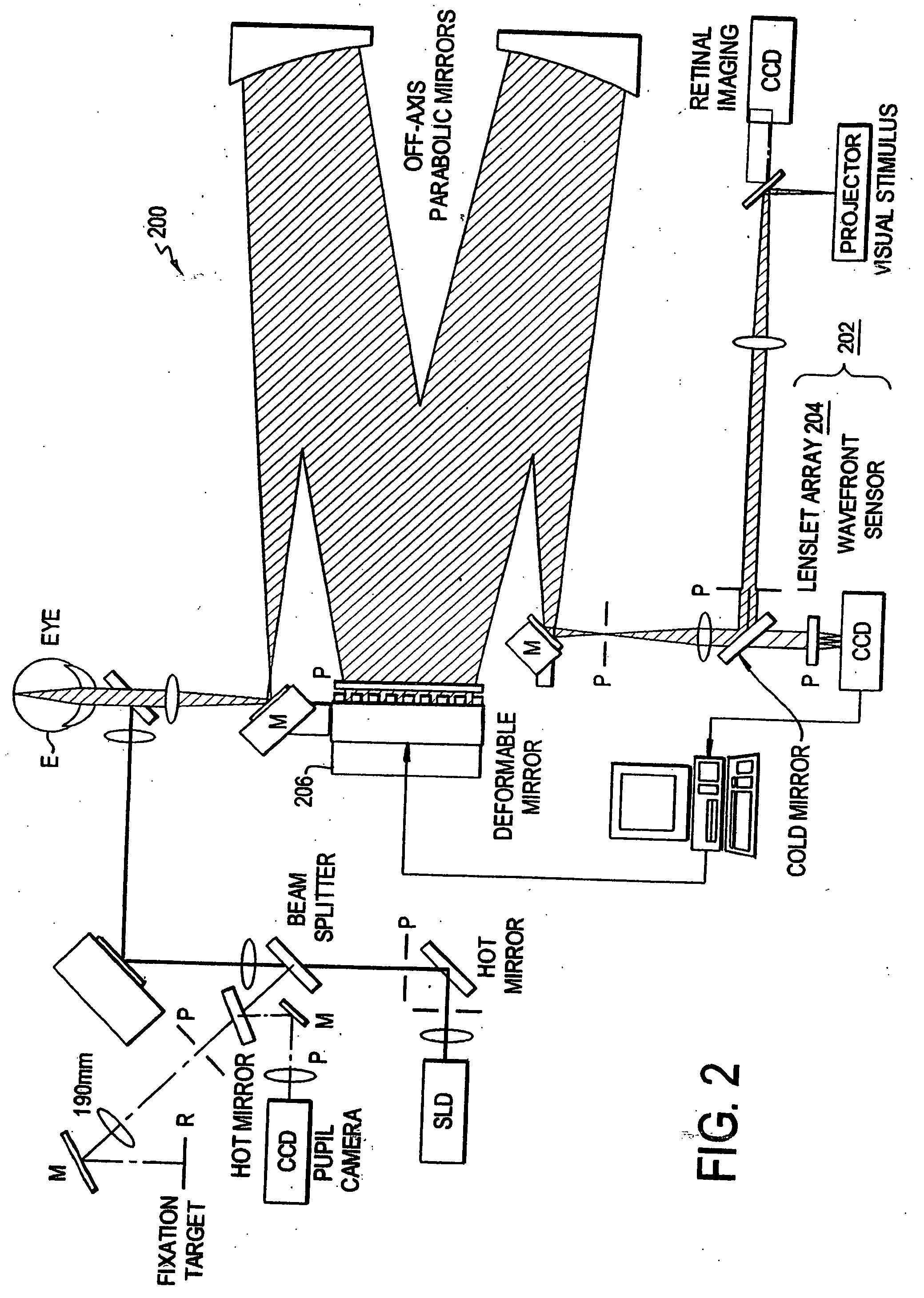[0014] The ability to predict the visual
impact of a given
wave aberration is important for several reasons. First, this information can guide the clinician in selecting the best strategy for improving vision in each patient. For example, are the higher order aberrations in the patient'
s wave aberration severe enough to warrant customized
refractive surgery, or is she likely to benefit just as much from conventional
refractive surgery? If the patient is complaining of haloes, flares,
monocular diplopia, or other
visual defects, can the problem be linked to the eye's optical performance, is the patient unusually sensitive to small defects in vision, or are other neural factors implicated? Second,
metrics to predict the subjective
impact of the wave aberration can be incorporated into algorithms to compute the best vision correction given a particular wave aberration. Methods of vision correction such as contact lenses, spectacles, and
refractive surgery generally correct fewer aberrations than can be measured with wavefront sensing technology. For example, spectacles can correct only five aberrations (defocus, two
astigmatism aberrations, and two prismatic aberrations), whereas wavefront sensors can reliably measure dozens of aberrations in normal human eyes. The higher order aberrations can influence the values of defocus and
astigmatism that provide the best subjective image quality. The development of
metrics for subjective image quality that include the effects of higher order aberrations will allow us to optimize vision correction.
[0016] The
metrics described in the preferred embodiment are univariate: only one number is used to characterize the blur produced by the eye'
s wave aberration. However, blur is not a unity perceptual experience. A multivariate scheme would more accurately describe the subjective effect of a given wave aberration. For example, our experience with different wave aberrations suggests that some of them reduce the overall contrast of the image, while keeping edges crisp. Others keep contrast high but sharp edges become fuzzy. Still other aberrations, especially odd-order aberrations like
coma, produce
asymmetry in images such as flaring away from the object in one direction. This suggests a tripartite metric with separate numbers for contrast, sharpness, and symmetry in the
retinal image. Ultimately, psychophysical experiments could determine the importance of each of these subjective qualities in overall quality. Therefore, while the preferred embodiment features a univariate sharpness metric, the present invention can be expanded to include multivariate metrics.
[0018]
Metrics for subjective image quality might also need to incorporate the fact that
neural processing is plastic, changing its performance depending on the wave aberration it currently sees the world through. There is a long history of research revealing this
plasticity. Distortions in the visual field, introduced with prisms, disappear with time, as do the chromatic fringes caused by
chromatic aberration. Recent experiments by Pablo Artal, working with the present inventor, reveal that this
plasticity extends to the monochromatic
aberrations of the eye as well. Artal used the Rochester Adaptive Optic Ophthalmoscope to remove the wave aberration from a subject. He then replaced the wave aberration, either in its original orientation or rotated by some amount. Despite the fact that the rotation only changes the orientation of the aberrations and not the objective amount of retinal blur, the subjective blur changed dramatically. Subjects viewing the world through their own wave aberration reported that it was much sharper than widen the wave aberration was rotated. These observations support clinical wisdom that patients will often reject astigmatic corrections that improve image quality, but cause too large a departure from their normal experience of the world. The effect has far-reaching implications for vision correction, since it means that subjects who receive an aberration-free view of the world through customized correction may require time to adjust to the benefit. Alternatively, vision correction might best be accomplished through a multiple step process that ultimately converges on the desired correction.
[0019] The development and validation of a metric based on the average patient is the first goal. But this metric could be customized depending on the specific characteristics of each patient. For example,
older patients are likely to have more light scatter, their
pupil sizes are smaller on average, their
accommodation range is reduced, and they will probably tolerate large changes in vision correction less readily. A metric that included
patient age as a parameter would help to ensure the optimum vision correction. The optimum metric for someone with a poor neural contrast sensitivity will be different than the metric for someone with exquisite neural sensitivity. It may ultimately be possible to build known features of an individual patient's
nervous system into the metric. For example, with
laser interferometry or
adaptive optics, it is possible to measure the neural performance of the eye independent of its
optical quality. There are large variations in the neural performance of different eyes, even normal eyes, and the metric could be customized to each patient accordingly. One could also customize the metric based on lifestyle. Patients with reduced
accommodation or whose lifestyle required good focus over a
large range of viewing distances might benefit from a increase in
spherical aberration compared with a patient, such as a
pilot, who would prefer to optimize performance at infinity.
[0020] The metric according to the present claimed invention allows
fully automated refraction. Autorefractors have not replaced
subjective refraction as the ultimate method to prescribe vision correction. The advent of the wave front sensing reopens the possibility of fully-automated
refraction. Wave front sensors provide much more information than autorefractors, since they indicate the fate of light as it passes through every point in the
pupil. A
fast algorithm has been described to compute the optimum vision correction for any metric from wave aberration data. Coupled with a biologically-plausible metric designed to mimic the eye and brain of each patient, wave front sensors may ultimately surpass the clinical
refraction as the preferred method for choosing the best correction, whether for refractive
surgery, spectacles, contact lenses, or
intraocular lenses.
 Login to View More
Login to View More  Login to View More
Login to View More 


